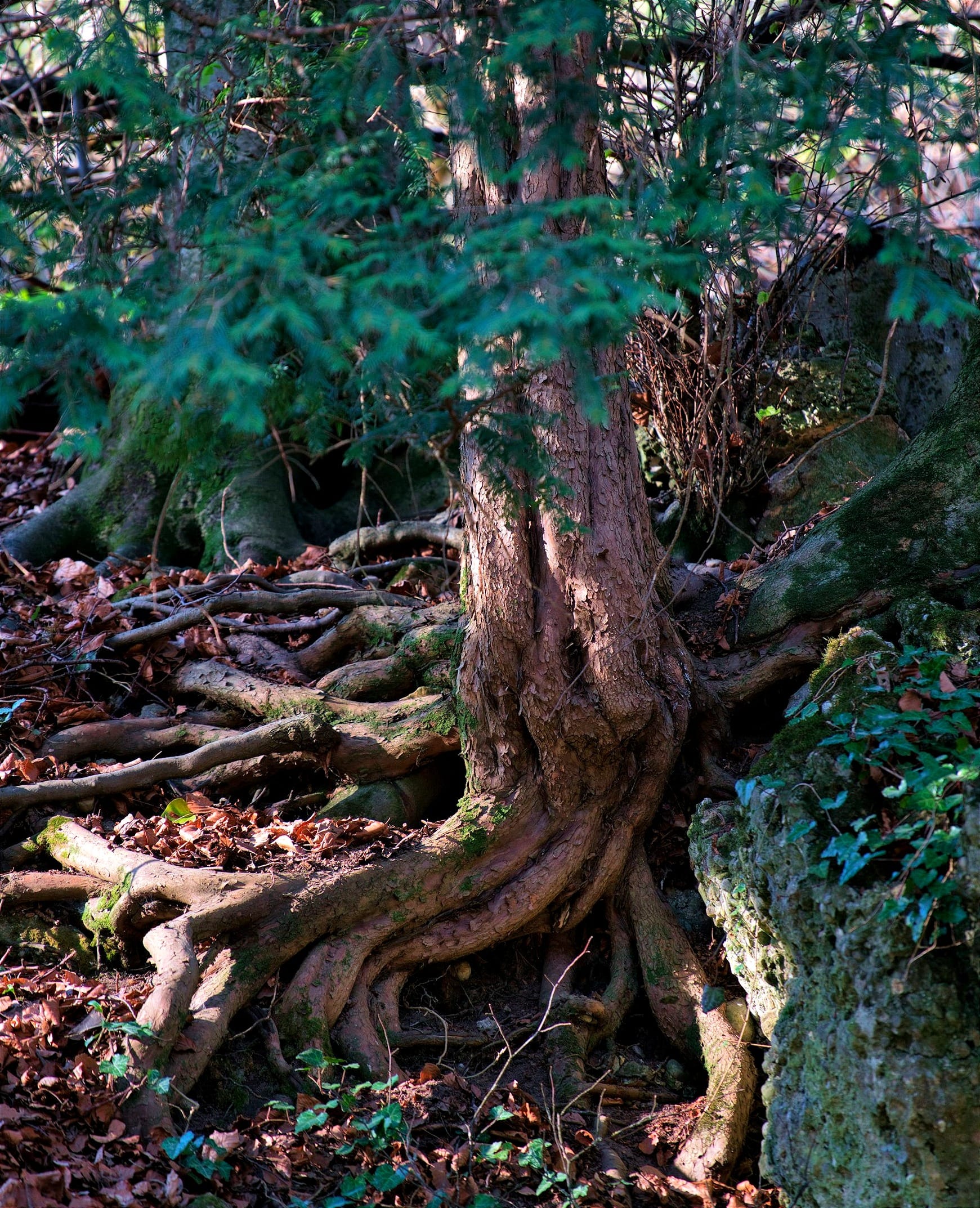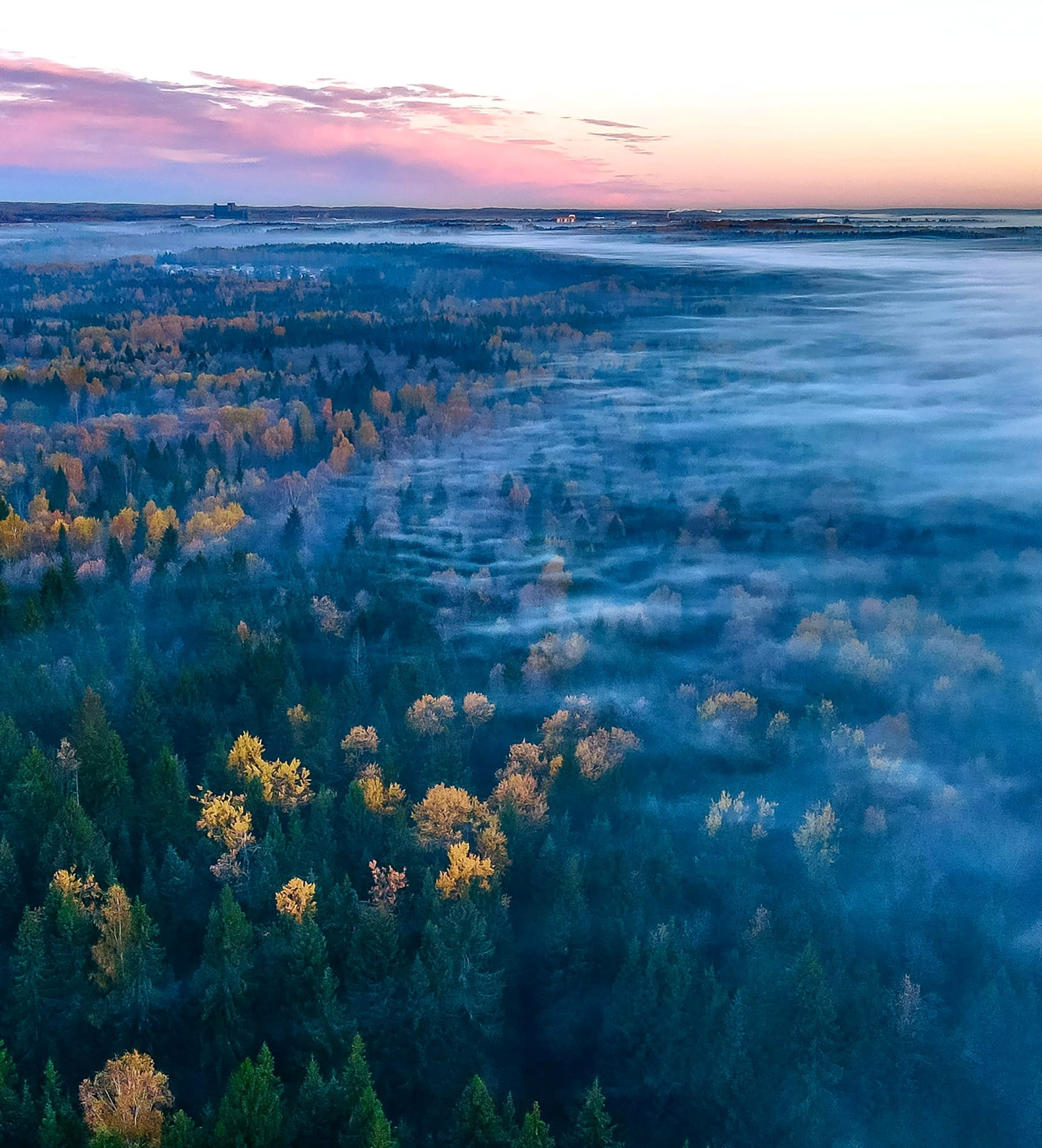Legacy - The Third Strand of The Braid
This is a repost of the second half of Braided Stewardship: Science, Responsibility, and Legacy. In hindsight, if I had

A century after the conservation idea took root, its renewal lies where it began — in connection, community, and care for one another and the land.
Evergreen exists because foresight alone is not enough. Stewardship requires relationship — and relationship takes commitment. If you value this work, please subscribe or donate today. What happens in the forest happens to us all.
A century after the conservation idea took root, its renewal lies where it began — in connection, community, and care for one another and the land.
Gifford Pinchot’s recognition of women’s organizing was not just moral praise — it hinted at a structural truth in how human systems move and grow.
Women work from community. Men work from hierarchy. Both are needed for stewardship to succeed and endure.
One builds connection; the other builds structure. One gathers; the other governs.
Together they form the living framework through which the conservation idea — what Pinchot called “foresight” — becomes reality.
Long before conservation had a name, it had a neighborhood.
Stewardship began not in policy but in relationship — among people who depended on the same watershed, shared the same forests, and knew that care for the land was care for one another. The early conservationists did not invent stewardship; they inherited it.
Women’s early conservation efforts grew through women’s clubs, gardening circles, education drives, and home-economics programs — forms of horizontal power. They built networks of trust, mutual aid, and moral suasion rather than legal authority. Their work rarely carried titles or budgets, but it carried conviction — and that was often the stronger currency.
Today, those same dynamics are visible in community-based stewardship: watershed councils, tribal forest partnerships, cooperative restoration projects, and local collaboratives that cross agency and private boundaries. In these circles, leadership is shared, decisions are built through consensus, and success is measured in restored trust as much as in restored acres.
Community power operates like mycelium — unseen but connective, spreading knowledge, care, and coordination through the soil of civic life. It holds the forest — and the movement — together from beneath.
Healthy soil depends on resilient networks — threads of fungi, roots, and microorganisms exchanging nutrients, carrying signals, and holding moisture in place. Mycelium is the living architecture of connection.
Much like the soil, when a system lacks the community factors of balance, exchange, and reciprocity, resilience is compromised.
Without those quiet exchanges — the give and take that binds the parts into a whole — both soil and the systems that claim to serve forest health lose their capacity to absorb disturbance and recover from stress.
Mycelium restores balance by redistributing what is needed where it is needed.
In community, women carry that same work of restoration — moving empathy, knowledge, and care through the larger body of society.
Their leadership functions like a living network, sustaining the health of the whole through the unseen labor of connection.
To restore soil health, we must restore relationship: reconnect roots, reintroduce life, and allow exchange to happen again.
Stewardship begins in that underground work — where patience and diversity rebuild resilience.
This is the work of the commons.
It is also the work of democracy — what Cornelia Bryce Pinchot called “the very stuff of which democracy is made.”
Cornelia understood that conservation was never merely about trees or water; it was about how people choose to live together — how we balance use with care, progress with fairness, and the individual with the common good.
Healthy soil and healthy democracy are built the same way: through participation, renewal, and shared responsibility.
In Pinchot’s time, Theodore Roosevelt, Gifford Pinchot, and Henry Graves built conservation through hierarchies — the Forest Service, commissions, and federal authority.
Roosevelt supplied the political will, Pinchot the public vision, and Graves the institutional framework that professionalized forestry and centralized decision-making.
Their structures turned ideals into law and law into land management, creating the scaffolding that still defines public stewardship today.
More than a century later, those frameworks endure — powerful, necessary, but often detached from lived relationship.
Policy still moves from the top down: through distant agencies, complex funding streams, and political directives that shape the land but not always the communities who live within it.
Decisions meant to safeguard forests can drift far from the people who know them best — local crews, tribal foresters, and rural residents whose livelihoods depend on their health.
Hierarchy provides structure; community provides life.
When one dominates, stewardship becomes either chaotic or coercive.
We see echoes of this today.
In many regions, wildfire strategy, climate adaptation, and water policy are still designed from afar — managed through layers of bureaucracy that rarely touch the ground.
And at the same time, serial litigation has become the enforcement arm of hierarchy, wielded by those who use process as power.
What once served as a legitimate check on government action is now too often used to paralyze it — stalling restoration projects, delaying fuel-reduction work, and draining public resources in endless procedural battles.
Meanwhile, local collaboratives and tribes working from the ground up continue the slow, practical work of restoration. They thin, replant, and rebuild trust across boundaries while policy grinds in courtrooms.
Just as in Pinchot’s time, the balance between authority and relationship remains delicate.
When hierarchy leads without listening — when law replaces dialogue — conservation loses its human roots.
From the groundwork of community, structure takes form.
Policy, like architecture, depends on integrity at its base.
When that foundation is built on trust, collaboration, and shared purpose, the framework above it can stand tall without losing its humanity.
Hierarchy and community are not competing systems — they are parts of the same design.
When the foundation of community informs the framework of policy, structure becomes service, and governance regains its roots.

When community and hierarchy move in rhythm, stewardship becomes dynamic — no longer a chain of command, but a living system that breathes, bends, and adapts.
Circle over pyramid.
It is no longer a hierarchy of needs.
It is a system of relationships — where things are connected, overlapping, and continually influencing one another.
Listening over command.
In a living system, water does not wait for permission to move downhill, and roots do not report to branches.
Each part interacts through reciprocity and response.
The health of one depends on the integrity of all.
Relational accountability over compliance.
Conservation, stewardship, and management must evolve to require a living form of accountability — one rooted in reciprocity, informed by listening, and sustained by trust.
Compliance can maintain order, but it cannot create care.
Relational accountability grows through collaboration on the ground — through the steady, imperfect work of people who stay in conversation with one another and with the land itself.
The outcomes that matter most are not manufactured for reports or headlines; they emerge naturally from the integrity of the work — from the relationships that make restoration real.
This does not reject hierarchy — it re-roots it in relationship.
When we work in circles instead of ladders, stewardship becomes dynamic and self-correcting.
It adapts, regenerates, and learns — just as the forest does.
What Pinchot called prudence alludes to what we now understand as relationship.
Where prudence once guarded, relationship now guides.
In his time, prudence meant restraint — the discipline to use resources wisely and to think beyond the present moment. It was a moral framework for an industrial age learning its limits.
But the lesson is broader.
Conservation was never intended to be a practice of control — it was always meant to be a practice of connection.
Prudence is not only about holding back; it is about holding together.
It asks not just how much we take, but how well we stay connected — to the land, to one another, and to the generations who follow.
This is what women have long carried into the work of stewardship — the connective tissue of community.
They remind us that foresight is not only about managing resources, but about sustaining relationships — the living systems of care, reciprocity, and trust that make resilience possible.
Today, stewardship asks for both.
It asks us to build systems as sound as Graves once designed, but rooted in the reciprocity Cornelia Bryce Pinchot embodied.
It asks us to see policy and community not as competing forces but as partners in resilience — the canopy and the soil of the same living forest.
If foresight was the beginning of the conservation idea, connection is its renewal.
The future of stewardship will not be written in statutes alone, but in the relationships that hold us — to one another, and to the land that makes us possible.
Foresight began the conservation idea, but connection was always its intent — the living agent that reminds us what the work was meant to serve: the land, each other, and the communities bound to both.

“Stewardship begins in relationship — in the quiet exchanges that keep both soil and society alive.”
You 100% tax-deductible subscription allows us to continue providing science-based forestry information with the goal of ensuring healthy forests forever.